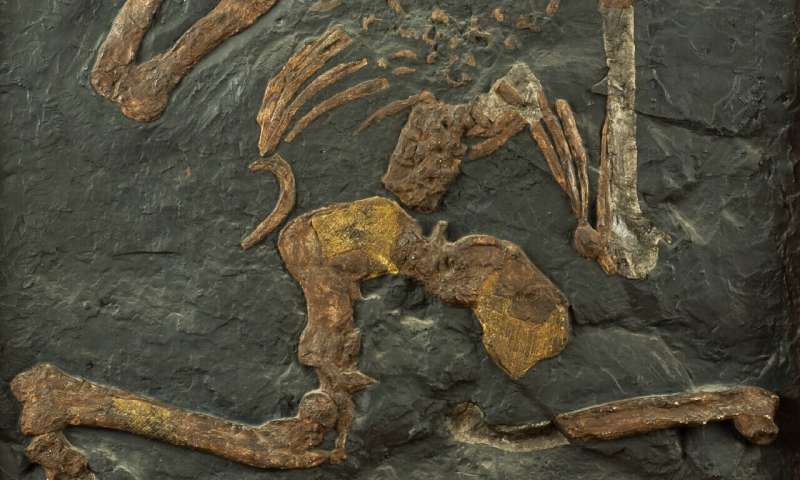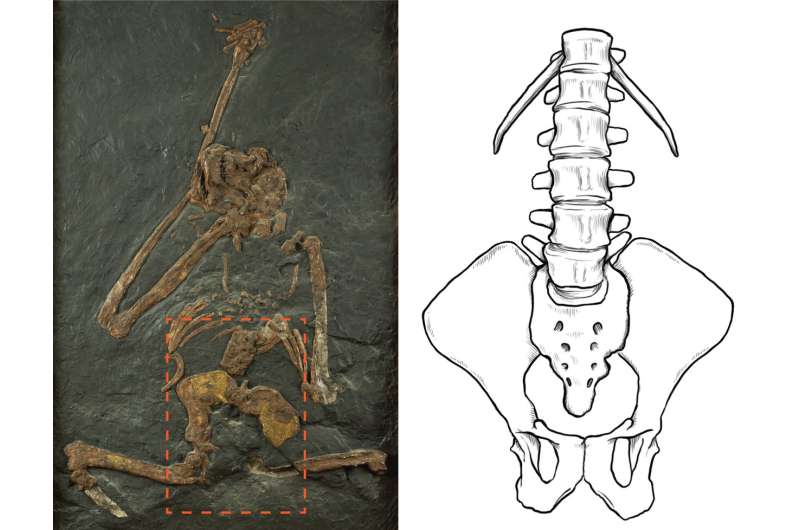December 24, 2019 report
New study suggests 'enigmatic hominoid' did not walk upright and was not a tree climber

An international team of researchers has concluded that the so-called "enigmatic hominoid" did not walk upright and was also not a tree climber. In their paper published in Proceedings of the National Academy of Sciences, the group describes their in-depth study of the skeletal remains of Oreopithecus bambolii and what they learned from it.
O. bambolii was a primate living in what is now Sardinia and Tuscany approximately 6.7 to 8.3 million years ago. Evidence of its existence was first discovered as far back as 1872. Since that time, scientists have debated its primary means of locomotion. Some have suggested that it was a tree climber, others disagreed, insisting it had evolved to become an upright walking terrestrial creature. Over time, it has come to be known as the "enigmatic hominoid." In his new effort, the researchers sought to settle the debate once and for all by studying the most complete skeleton that has ever been found—one unearthed in 1958 while workers were digging a coal mine. Prior research had shown the skeleton to be that of a 30-kilo male.
To figure out if it was tree climber or if it walked upright, the researchers carefully studied the nearly complete skeleton and compared what they found with other ancient and modern primates. They report that they found the torso bears a close resemblance to a type of modern gibbon. They also found that it had five lumbar vertebrae instead of the four found in modern great apes. And they found that the pelvis was different from all other known primates—modern or ancient. It had a transverse orientation of the iliac wings and the length of the ischium more closely resemble Miocene hominids.
They report that the structure of the pelvis was more conducive to walking upright than is the case for modern apes, but not enough to walk upright like humans. And they noted that there was little evidence of the torso and pelvic stiffness needed for climbing trees. They conclude by suggesting that because the creature lived on an island it had found, it could safely walk on land, and because of that, lost the ability to climb, but never found it necessary to walk upright. They also noted that it had evolved other adaptations for such an existence, including changes to its hands and feet.

More information: Ashley S. Hammond et al. Insights into the lower torso in late Miocene hominoid Oreopithecus bambolii, Proceedings of the National Academy of Sciences (2019). DOI: 10.1073/pnas.1911896116
Journal information: Proceedings of the National Academy of Sciences
© 2019 Science X Network





















